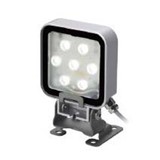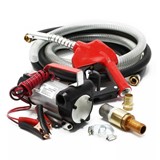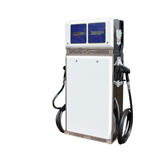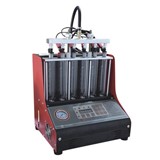Fuel cell was created by Ballard power in Canada, and then by joint venture with DaimlerChrysler over the last several years. The core of the fuel cell consists of a membrane electrode assembly (MEA), which is placed between two flow-field plates.
The MEA consists of two electrodes, the anode and the cathode, which are each coated on one side with a thin catalyst layer and separated by a proton exchange membrane (PEM).
The flow-field plates direct hydrogen to the anode and oxygen (from air) to the cathode. When hydrogen reaches the catalyst layer, it separates into protons (hydrogen ions) and electrons.
The free electrons, produced at the anode, are conducted in the form of a usable electric current through the external circuit. At the cathode, oxygen from the air, electrons from the external circuit and protons combine to form water and heat.
Fuel Cell
A single fuel cell consists of the membrane electrode assembly and two flow-field plates.
Hydrogen
Hydrogen flows through channels in flow field plates to the anode where the platinum catalyst promotes its separation into protons and electrons. Hydrogen can be supplied to a fuel cell directly or may be obtained from natural gas, methanol or petroleum using a fuel processor, which converts the hydrocarbons into hydrogen and carbon dioxide through a catalytic chemical reaction.
Membrane Electrode Assembly
Each membrane electrode assembly consists of two electrodes (the anode and the cathode) with a very thin layer of catalyst, bonded to either side of a proton exchange membrane.
Air
Air flows through the channels in flow field plates to the cathode. The hydrogen protons that migrate through the proton exchange membrane combine with oxygen in air and electrons returning from the external circuit to form pure water and heat. The air stream also removes the water created as a by-product of the electrochemical process.
Flow Field Plates
Gases (hydrogen and air) are supplied to the electrodes of the membrane electrode assembly through channels formed in flow field plates.
Fuel Cell Stack
To obtain the desired amount of electrical power, individual fuel cells are combined to form a fuel cell stack. Increasing the number of cells in a stack increases the voltage, while increasing the surface area of the cells increases the current.
Fuel cell technology is changing the world and already has received hundreds of millions of US$ in research. The car industry of course uses the fuel cell to produce around 80-90 kilowatts of power to electric motors within the respective hydrogen fuel cell powered cars. That's a lot of power and is more than equal to current medium sedan cars today running on smelly petrol combustion engines.GM in the US has a target of the first company to sell 100,000 units in year 2010.
The government of the U.S.A. passed the Hydrogen Futures Act of 1996 some years ago , so the US has made a loud statement of what's to come.
The National Hydrogen Association of Australia












-160x160-state_article-rel-cat.jpg)